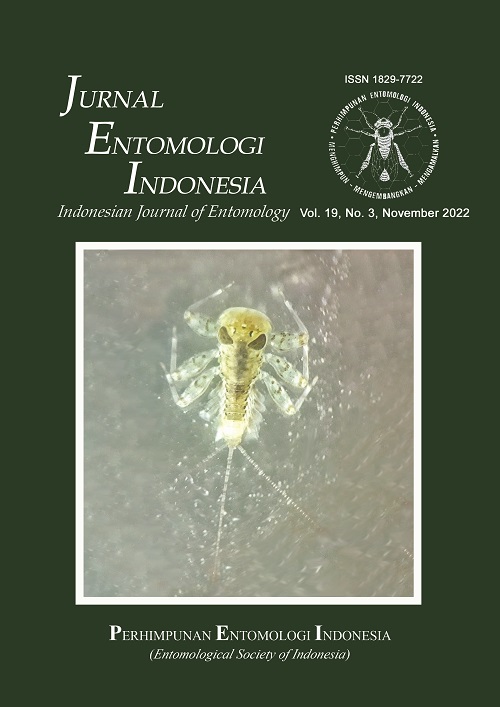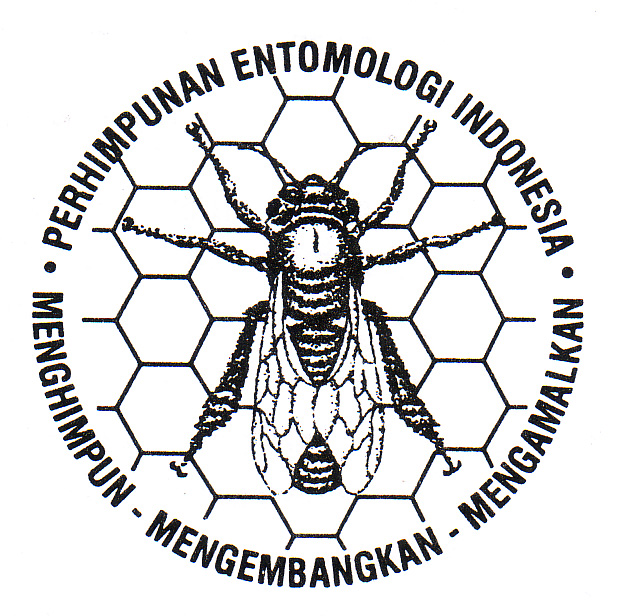Keanekaragaman dan perilaku menggigit nyamuk sebagai vektor potensial filariasis di Kabupaten Banyuasin, Sumatera Selatan
DOI:
https://doi.org/10.5994/jei.16.2.91Keywords:
biodiversity, filariasis, Mansonia spp., mosquito, vectorAbstract
Filariasis is a chronic infectious disease caused by filarial worms and transmitted by various types of mosquitoes such as Mansonia, Anopheles, Culex, Aedes, and Armigeres. This study aims to determine the diversity and biting behavior of mosquito species as the potential vector of filariasis transmission in Banyuasin Regency, South Sumatera. The research was conducted for 12 hours from 18.00 to 06.00 with human landing collection method and animal biting trap in December 2016. The results showed that the mosquito diversity in the studied area was high with 16 species of mosquitoes successfully identified in which Ma. uniformis (47.28%), Cx. tritaeniorhynchus (23.89%) and Cx. vishnui (14.48%) were the most dominant mosquitoes collected. The result also showed that the biting behaviour of Ma. uniformis was found to be more active outdoors than indoor with man biting rate (MBR) of 100,50 mosquitoes per night and man hour density (MHD) of 11,90 which was the highest of all captured species. Further parity rate analysis supported the collecting result by showing the estimated age of Ma. uniformis population which was 31.8 days and positively confirmed M. uniformis as a vector of filariasis transmission
Downloads
Published
How to Cite
Issue
Section
License
Authors who publish with this journal agree to the following terms:
- Authors retain copyright and grant the journal right of first publication with the work simultaneously licensed under a Creative Commons Attribution License that allows others to share the work with an acknowledgement of the work's authorship and initial publication in this journal.
- Authors are able to enter into separate, additional contractual arrangements for the non-exclusive distribution of the journal's published version of the work (e.g., post it to an institutional repository or publish it in a book), with an acknowledgement of its initial publication in this journal.
- Authors are permitted and encouraged to post their work online (e.g., in institutional repositories or on their website) prior to and during the submission process, as it can lead to productive exchanges, as well as earlier and greater citation of published work (See The Effect of Open Access).









